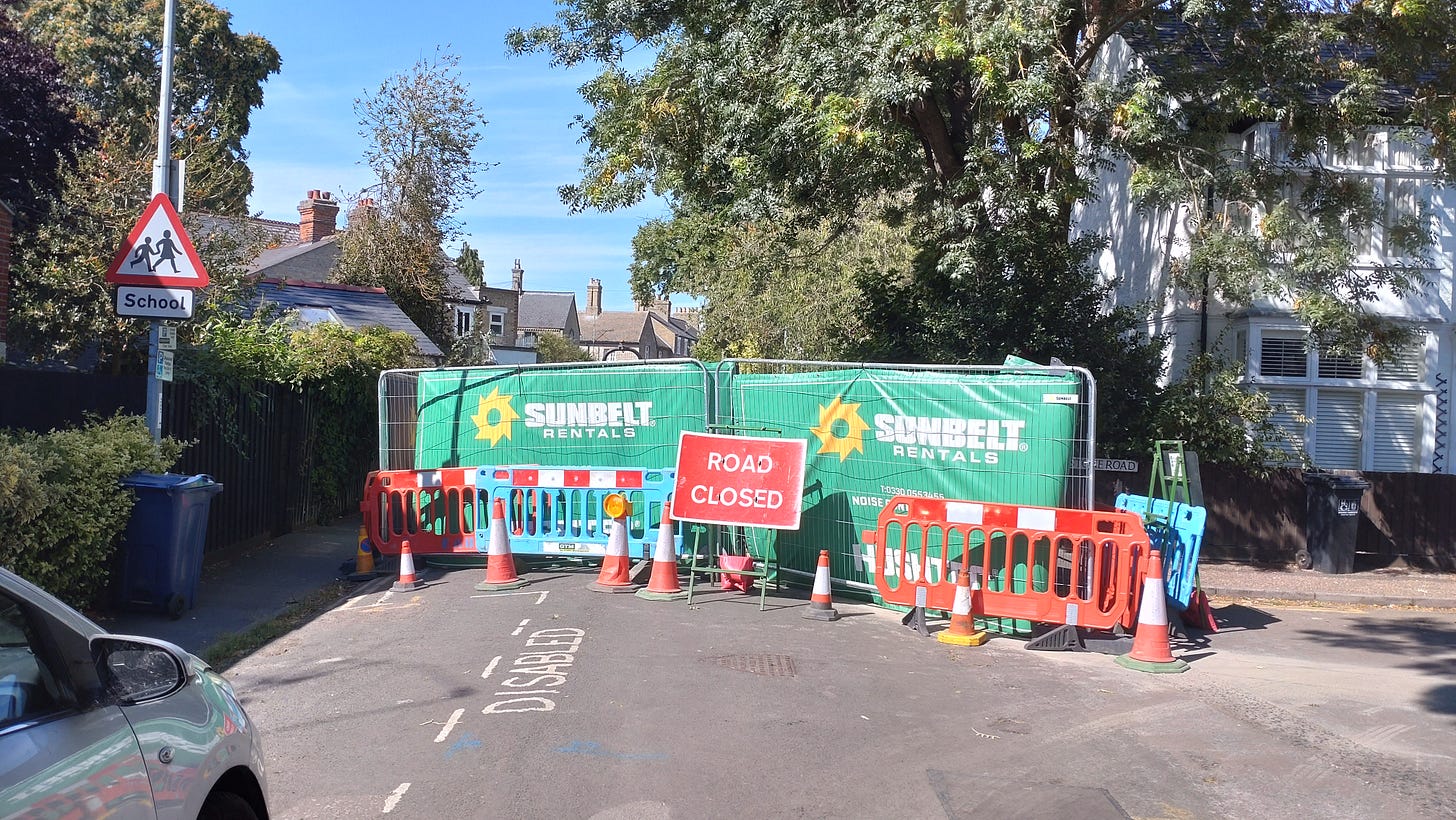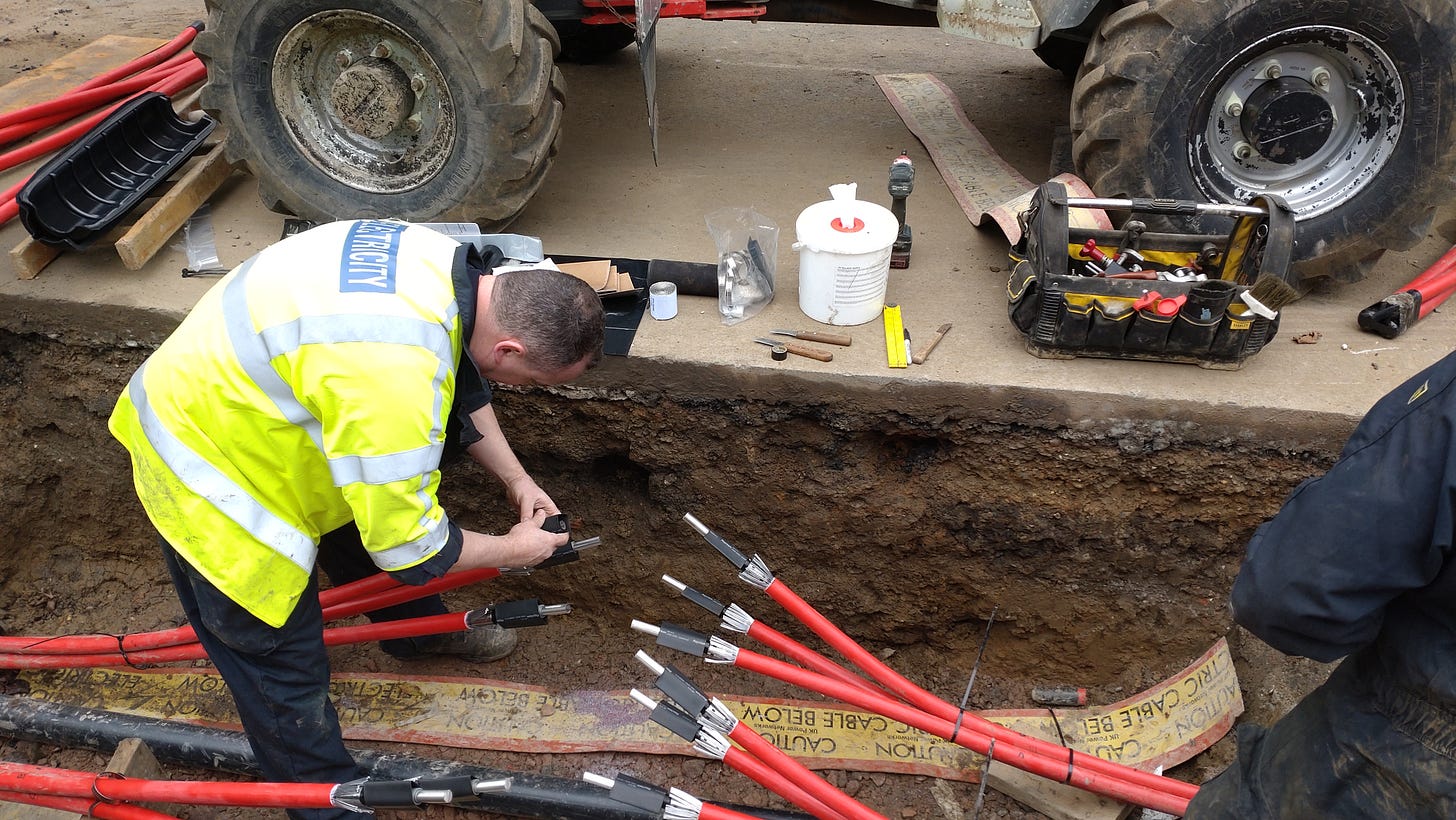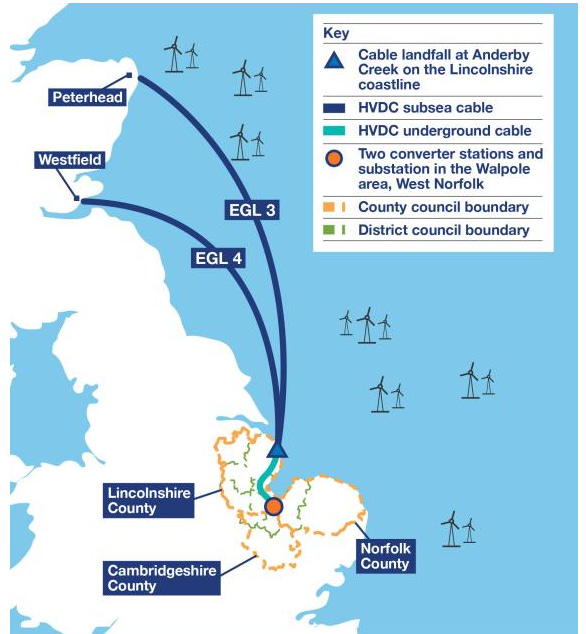Great Grid Upgrade
Over the last few weeks, contractors have been digging up the streets near my home....
Over the last few weeks, contractors have been digging up the streets near my home to put in bigger power cables, so one of the colleges can install heat pumps in their student accommodation. However, although we’ve had traffic lights and road closures here for weeks, it’s been quieter and less disruptive than some had feared.
This sort of thing is happening across Cambridge. For example, a few months ago, I saw big cables being installed in Gwydir Street, apparently providing power for one of Astra Zeneca’s buildings.
As we all steadily replace our petrol and diesel cars with electric ones and replace our gas boilers with heat pumps, electricity demand is forecast to increase by 50% by 2035 and double by 2050. The National Grid points out that just one 50kW “rapid” eV charger has the same impact on the power network as a block of 25 new flats, so this is a big challenge.
To cope with this increased demand, UK Power Networks, who are responsible for the local power grid, are installing, or consulting on installing, 3 new substations around Cambridge; one near Newmarket Road, one near Cherry Hinton Road and one near Addenbrookes Road. They are also upgrading an underground cable (mostly under the roads) between Fulbourn and Sawston.
The electrification of everything is clearly a “good thing”, because it helps avoid catastrophic climate change. It’s also cleaner and healthier and allows us to use cheap renewable electricity from wind and solar, rather than oil and gas, which are now mostly imported. But it’s a major challenge: the National Grid points out that the last major upgrade to the grid was in the 1950s and 1960s when high voltage transmission lines were installed to meet a rapidly growing demand for electricity.
Back then, electricity was mostly generated from coal in the Midlands or S Wales, but now we are generating clean renewable power all over the place. Wind, mostly from offshore turbines, already provides 30% of UK electricity. Solar and biomass produce about 5% each. To connect this clean energy from where it’s generated to where it’s needed, the National Grid are doing a “Great Grid Upgrade” project across the UK. Locally, this includes several big undersea cables bringing power from Scotland to southern Lincolnshire, which are then connected via underground cables to a big new “Converter Station” near Wisbech. Another undersea cable will connect Suffolk to Kent.
National Grid: Proposed Eastern Green Links 3 & 4
We’re seeing a quiet transformation of our power system, comparable to the creation of the national Gas Transmission Network in the 1960s.
So next time you see people at work upgrading our electricity system, do give them a smile and a thumbs up!




